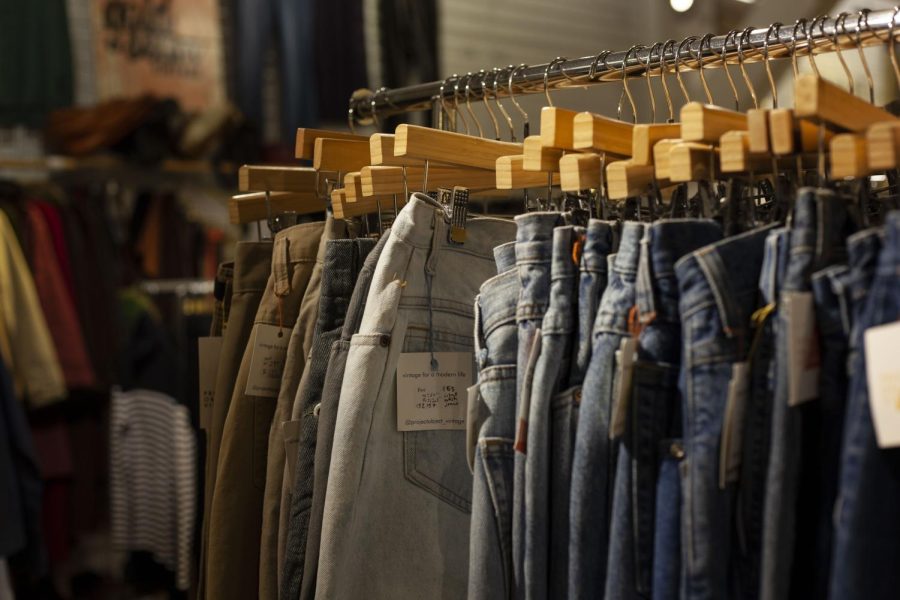Vintage stores notice increased popularity
Jeans from “vintage for a modern life” hang inside of The Vault Nov 13.
November 18, 2021
Off the north end of Church St. a shop with wide clear windows features mannequins posed in vintage clothing.
There has been an influx of people shopping vintage in Burlington who are more interested in cool aesthetics than the history of the clothing, The Vault Collective owner Ruth Meteer stated in a Nov. 10 email to the Cynic.
“[The new popularity] is an interesting shift that affects what our vintage dealers collect for their booths, and how they price their inventory,” the email stated.
The rate of people thrifting clothing became popular in the pandemic era and is expected to stick, according to an April 2021 GlobalData Consumer Survey. Fifty three percent of Generation Z and Millennials said they will spend more on secondhand clothing than in other industries.
Thrifting became attractive because of its zero waste ethic and the appeal of finding hidden gems hiding in old clothes, sophomore Tate Fallon said.
“I just think [thrifting] is an adventure every time and you never know what you’re gonna find,” he said.
There are thrift stores all over Burlington, but some stand out as sources of high quality vintage wear. A sweater at The Vault Collective on Cherry Street and Billie Jean Vintage on Battery Street might run you over $40 as opposed to $5 at ReSource in Williston.
The rejection of fast fashion for secondhand items has driven business to Billie Jean Vintage, co-owner Diane Reily said.
Billie Jean’s selection is targeted at young professionals aged 25-30, co-owner Meghan Jean Mello said. Fast fashion isn’t raising their prices so much because their curation is high end to begin with.
“I also bring stuff in the store for college students and try to make it a more affordable price,” Mello said. “We’re definitely focused on more high end, high quality vintage.”
The new demand for fashionable clothing affects the pricing in some curated vintage stores, but the mass production of low quality clothing known as fast fashion will create even more barriers to high end thrifting, Meteer stated.
Fast fashion and Americans’ clothing turnover began increasing 40 years ago, according to an Aug. 29 2019 Wall Street Journal article. On average, Americans will buy 68 new garments every year and wear each one seven times before trashing them.
Vintage will be affected by this cycle more in the future, Meteer stated. In 20 years, the cheap, disposable clothing of today’s times will not be added to vintage collections when it is found in estate sales and attics.
Cotton cultivation depleted and degraded soil in many places due to its need for high amounts of water and use of pesticides, according to The World Wildlife Fund website.
“If the plants are not healthy, the fabrics made from them are just not going to be as nice as they were 20 years ago let alone 100 years ago,” Meteer stated.
The low quality of fabrics and the cheap items made from them will cease the process of collecting vintage clothes.
“My guess is vintage will become more exclusive and more expensive as the years go by,” Mateer stated.







